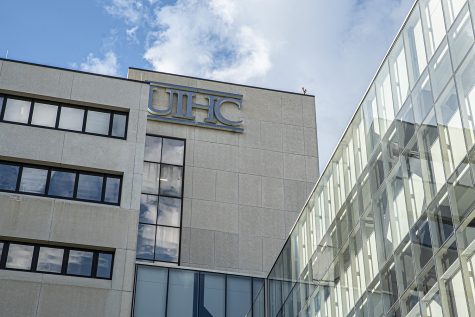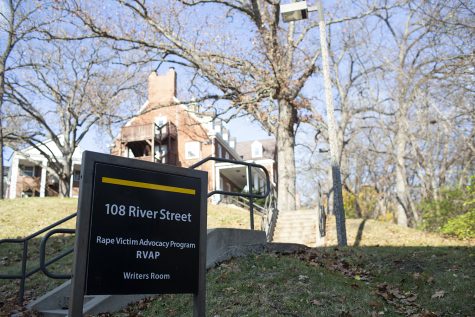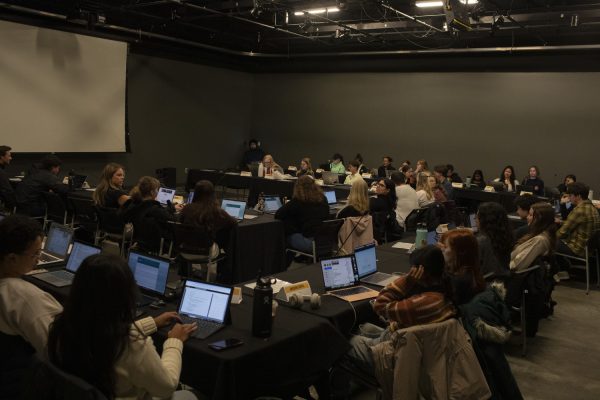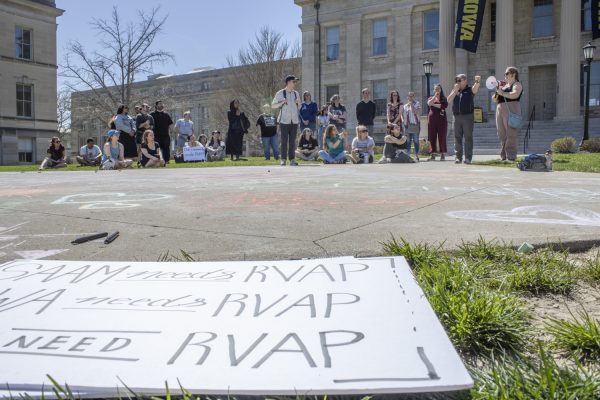UI researchers use aerosol-transmission calculator to assess classroom safety
Professors at the UI use an Airborne Transmission Estimator to determine which classrooms have the best air circulation. The tool will help the university schedule classes in rooms that will aid reduction of coronavirus particle transfer.
University of Iowa Chemical and Biomedical Engineering Professor Charles Stanier poses for a headshot. Contributed.
July 16, 2020
Researchers at the University of Iowa are using an aerosol transmission calculator to test the number of small particles in classrooms on campus. They plan to use this device to determine which classrooms are best for in-person classes and reduced transmission of the coronavirus.
The Airborne Transmission Estimator was originally developed by Professor Jose-Luis Jimenez at the University of Colorado-Boulder. UI College of Engineering Professor Charles Stanier is working with Professor Tom Peters in the College of Public Health and graduate student David Rabidoux to adapt this tool for UI classrooms.
Stanier said the team gathers information on the ventilation system from UI Facilities Management to see how much air is flowing through the room, what kind of air filter is used, and how much fresh air is coming in.
They have two methods to determine the number of particles in the air. One is gathering information from sensors used in some buildings on campus. If there are no sensors in that room, the team tests it manually, Peters said.
“We shoot off a CO2 fire extinguisher for a few seconds,” Peters said. “If it’s a well-ventilated room, that CO2 will disappear quickly. If it’s a poorly ventilated room, it stays around for a long time.”
Using this method, Peters said the team can determine the number of particles in a room and whether the classroom is safe for students.
The researchers are sharing their findings with the Facilities Management department, Rabidoux said, to help provide information on which classrooms are best for students.
RELATED: Johnson County Public Health and hospitals respond to recent spike in COVID-19 cases
Facilities Management is also working to improve air flow in buildings, Stanier said. It’s spending over $500,000 to upgrade the filter systems, Facilities Management Assistant Vice President Lynne Finn said.
“We have developed a checklist for system assessments — prioritizing classrooms, the spaces with the most inherent risk based on number of people and length of time being in the same place,” Finn said in email to The Daily Iowan. “We are evaluating program modifications for classroom spaces as well. These modifications will increase air changes by making variable air volume constant, in effect leveraging the maximized designed rate of air exchange.”
Facilities Management is working with the campus Critical Incident Management Team and the UI Registrar’s Office on classroom scheduling, Finn said.
In order to help reduce risk, the researchers are also looking at how many students can fit in classrooms while social distancing, Stanier said. They plan to continue observing classrooms once students arrive, to see the difference in air circulation and mask compliance, he added.
To reduce the number of particles in the air, Stanier recommends students keep talking to a minimum and wear face masks.
“If mask compliance is very low, I think a lot of faculty members will be discussing how we fix that and what went wrong,” Stanier said. “That puts the whole semester at risk. We want to make it to the end and not have to shut down again.”
RELATED: Johnson County residents urge Iowa Gov. Kim Reynolds to require face coverings
Professors should try to limit the amount of talking in class, Stanier said, because minimal talking emits fewer particles.
“Try to limit the amount of talking by using other educational methods,” Stanier said. “You don’t have to have your small groups talk all the time. You could reduce the amount of small group discussion and put that part of the class online.”
While the calculator works to keep the semester from going online, Peters said students and professors should be aware of the possibility of infection around them. One of the most important ways to reduce transmission is to wear a mask.
“There’s a duty to protect the economy, to protect your fellow classmates, people with preexisting medical conditions, and family members,” Stanier said. “You need to protect the whole semester from shutting down.”
















